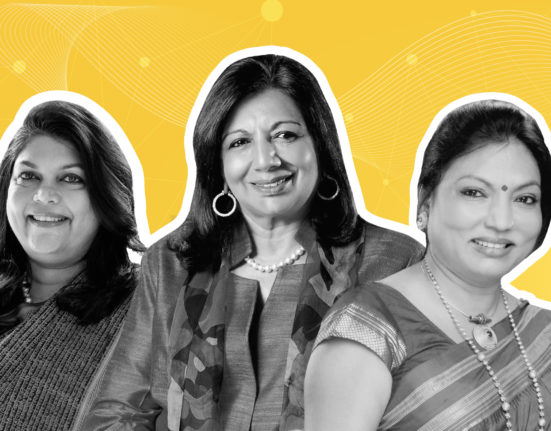It’s no secret that women face disproportionately higher rates of restrictions around education and work – barely a quarter of India’s women make it into the workforce. While India has experienced tremendous economic growth, the growth has clearly not benefited the population equally.
But why should the world of business care?
It’s because gender disparities are not just a social and cultural challenge – they’re an economic one. Studies show that narrowing the gender gap can add an additional GDP opportunity of USD 28 trillion (about an additional 26%) to the world economy by 2025. This is equal to the GDP of Japan, Germany, and the United Kingdom combined!
For India, the impact could be just as impressive:
- Reaching gender parity could raise India’s GDP by as much as 27%.
- If Adding just half of India’s working-age women to the workforce could increase the country’s growth rate from 7.5% to 9%.
- Investing in women entrepreneurs would add 150-170 million jobs to the market by 2030
The data is indisputable. Adding women to the workforce is a win-win situation for all. But are we doing enough to ensure this happens?
Let us start by taking a look at where we are right now.
Where Does India Stand Right Now?
Let’s see how India fares on two major global development indices that attempt to measure gender parity.
The first index is the World Economic Forum’s Global Gender Gap Report 2022. This report measures gender-based gaps along four key dimensions:
- Economic Participation and Opportunity
- Educational Attainment
- Health and Survival
- Political Empowerment
Here, India ranks a dismal 135 out of 146 countries.
Source: WEF Global Gender Gap Report 2022
Here, India is at the absolute bottom in Health and Survival. On Economic Participation and Opportunity, India scored 0.350 out of 1, placing us at 143 out of the total 146 countries.
The country also lags significantly behind other South Asian countries – In fact, the only South Asian countries that have poorer development indices than India are Pakistan (0.810) and Afghanistan (0.681).
While these figures seem bleak, there are things to be hopeful about. The Government of India, in its effort to reduce the country’s gender gap, has envisaged various schemes and policies. These policies aim to empower women and bring them to the forefront of the country’s economic activities.
What Are India’s Policies – and Do They Work?
In terms of women’s education, the government has come up with several schemes:
- Balika Samridhi Yojana and other schemes offer monetary benefits along with savings accounts designed for parents of girls.
- Rashtriya Madhyamik Shiksha Abhiyan (RMSA) aims to provide a school near every habitation and remove barriers to school attendance.
- CBSE Udaan scheme aims to increase the enrolment of girls across India’s prestigious engineering and technical colleges.
The progress we’ve made here is evident. The All India Survey on Higher Education (AISHE) 2019-20 noted a sharp increase in female participation at MA, MSc and MCom levels from the period 2015-16 to 2019-20. Female enrolment in higher education went up by 18% during this period.
However, the sphere of economic participation still remains challenging for women.
Women face several cultural barriers that prevent them from participating in the economy, including issues relating to workplace safety, access to opportunities, wage parity, security of tenure, discrimination, and intense pressure to manage childcare and housework.
According to World Bank data, women’s participation in the labour force has dropped significantly from 2005, falling even more sharply in 2020. In 2021, it was estimated to be 19.2%. This is among the lowest across developing nations.

Source: World Bank
Women in India tend to be pigeonholed into industries that do not see regular wage growth or new employment opportunities. The majority are employed in the informal sector, with limited protections and poor wages. These are also the jobs that are most affected by pandemic-related disruptions.
And although the pay gap has declined from 48% in 1993-94 to 28% in 2018-19, the pandemic has undone years of slow and steady progress – there has been a 7% increase in the pay gap between 2018-19 and 2020-21.
Let’s look at some of the schemes and policies that have been implemented to create more economic opportunities for women.
Government-powered Economic Opportunities for Women
Stand Up India
A flagship scheme of the Department of Financial Services (DFS), Ministry of Finance, Stand Up India offers to finance women entrepreneurs and/or entrepreneurs belonging to scheduled castes and scheduled tribes.
Under this scheme, women or SC/ST entrepreneurs with a majority stake in their enterprises can access loans of Rs 10 lakh to Rs 1 crore. These loans can be used for setting up greenfield enterprises in manufacturing, services, the trade sector, or agriculture-allied sectors. The loan is repayable in 7 years.
So far, over 1.5 lakh loan applications have been sanctioned through the scheme, adding up to a total sanctioned amount of Rs 34,989.12 crore.
Pradhan Mantri MUDRA Yojana (PMMY)
MUDRA was set up in 2015 with the objective of funding micro-enterprises. It works synergistically with national programs such as Make in India, Start-up India, and Stand-up India that are aimed at fostering innovation and entrepreneurship.
MUDRA provides loans of up to Rs 10 lakhs to non-corporate and non-farm small/micro-enterprises across the country. It includes the Women Enterprise Programme which encourages women entrepreneurs to take loans, while also incentivizing financial institutions to offer credit to women entrepreneurs. Women entrepreneurs are eligible for loans through MUDRA if they are running production and manufacturing businesses or looking to start, expand or modernise services-based businesses.
Data suggests this has been effective in providing necessary support to women entrepreneurs — 68% of loans extended in 2021 were disbursed to women entrepreneurs, amounting to Rs 7.42 lakh crores.
Women Entrepreneurship Platform (WEP)
Launched by NITI Aayog in 2018, the Women Entrepreneurship Platform (WEP) is a non-profit that helps women entrepreneurs start and scale their businesses.
WEP has tie-ups with several industry bodies such as SIDBI, CRISIL, NASSCOM, CII, FICCI, etc, to provide women entrepreneurs the support they need at each stage of their entrepreneurship journey (such as financial aid, mentoring, compliance services, and more). By doing this, WEP aims to address bottlenecks, enable sustainable, long-term growth for women entrepreneurs, and create a vibrant ecosystem of women entrepreneurs in India.
Financing Schemes by Banks
There are also a number of government financing schemes designed for women entrepreneurs.
Orient Mahila Vikas Yojana Scheme: Offered by the Oriental Bank of Commerce, the Orient Mahila Vikas Yojana Scheme allows women entrepreneurs with majority ownership of their businesses to access loans of Rs 10 lakh to Rs 25 lakh. Women entrepreneurs also get a concession of up to 2% on the interest rate.
Stree Shakti Yojana: This scheme offers an interest rate concession of 0.05% on loans more than Rs 2 lakh to women entrepreneurs with the majority ownership in their businesses. Applicants need to be enrolled in the Entrepreneurship Development Programme (EDP) of their state agency.
Dena Shakti: Through the Dena Shakti Scheme, women entrepreneurs in agriculture, manufacturing, micro-credit, retail stores, or small enterprises can avail loans of up to Rs 20 lakh, as well as a concession of 0.25% on the interest rate.
Cent Kalyani: Provided by the Central Bank of India, the Cent Kalyani scheme helps women access loans (of Rs 10 lakh to Rs 100 lakh) to start a new business or modernise an existing one. New and existing women entrepreneurs operating in Micro, Small and Medium Enterprises (MSMEs) in agriculture, cottage industries, and retail trade can apply for this scheme.
Paid Maternity Leave
The Maternity Benefit Amendment Act of 2017 increased the duration of paid maternity leave available for women employees from 12 weeks to 26 weeks, and made creche facilities mandatory for establishments with more than 50 employees.
However, a survey conducted three years later in 2020 found that only 40% of employers provide the mandated 26 weeks of paid maternity leave.
There’s More Work to Be Done
In some areas, India has made tremendous progress towards closing the gender gap. For example, a critical issue for India has been the declining sex ratio, largely due to female foeticide and violence against women. But this is now normalising as a result of sustained efforts by the government.
To take another example, initiatives like the Pradhan Mantri Jan Dhan Yojana (PMJDY) have enabled access to financial services for 230 million underserved women – there is now no longer a gender gap in bank account ownership. Global Findex Database 2021 data shows that 77.6% of women in India now have individual bank accounts, as opposed to only 22% of women in 2011.
But other gaps still remain.
Funds allocated to several schemes intended to promote women’s education, health, and economic development (such as POSHAN and the Beti Bachao, Beti Padhao fund) are underutilised. And while many private sector companies and NGOs offer healthcare, childcare, training programs, and access to savings and credit for women, these programs do not reach the vast majority of women.
To change this, businesses and the government need to work together in a unified way and enable quicker outcomes. There’s potential to boost gender parity if businesses were to launch initiatives that are drawn from national priorities, such as ensuring pay parity, a higher percentage of women in leadership positions, and more.
The need is urgent – at the current rate of progress, closing the gender gap in countries like India will take close to two centuries. But with focused efforts, this time can be shortened, and we can see growth in the country much faster.





